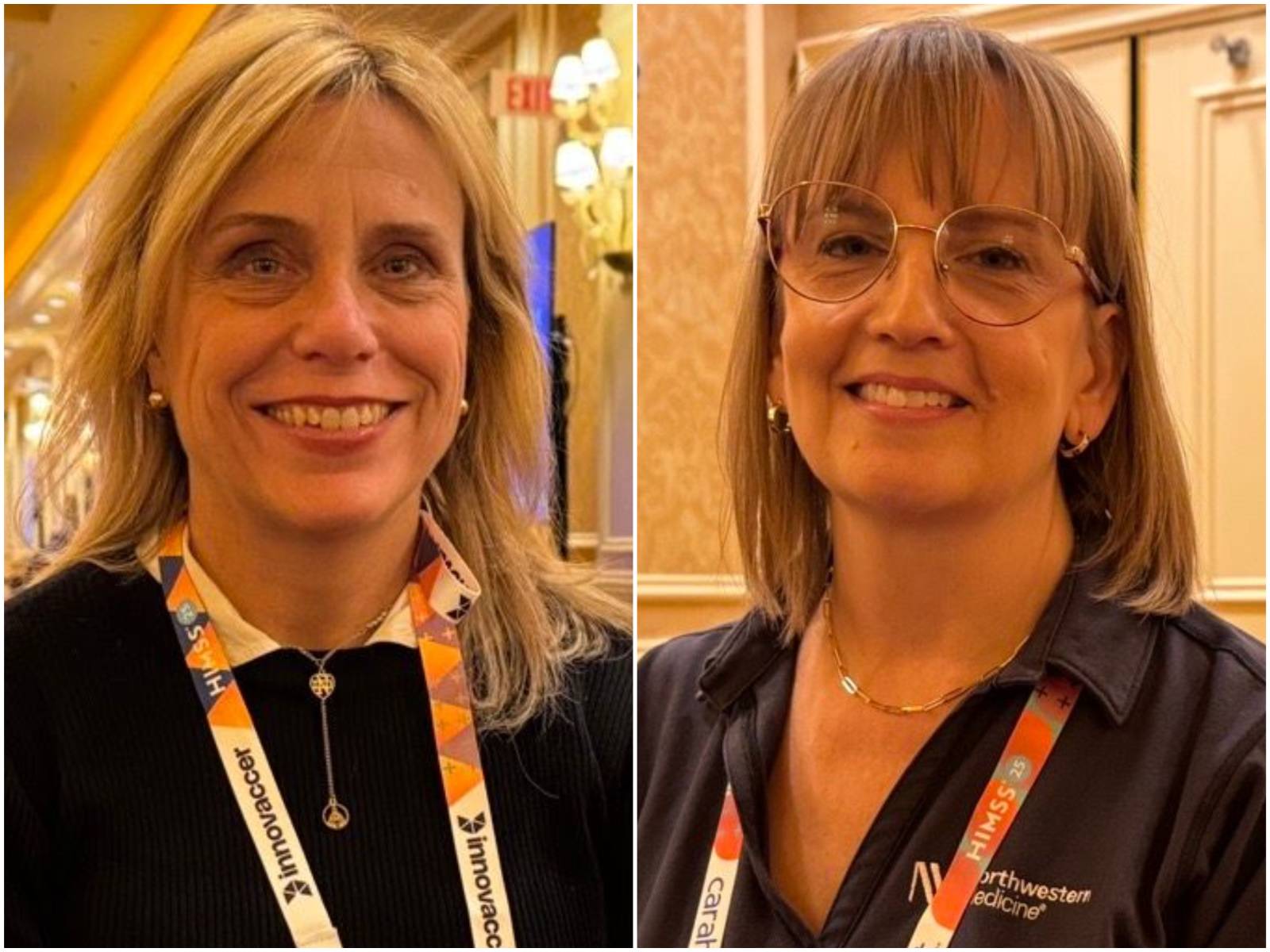Working to bring more women into healthcare technology roles
At Northwestern Medicine, leaders are working to recruit more women in IT roles and prepare them for management positions.
A couple of years ago, women leaders at Northwestern Medicine began talking about the small number of women working in technology roles.
Susan Feeley, left, and Julie Bryant of Northwestern Medicine have launched a program to recruit more women for technology roles. They talked about their work at the HIMSS Global Health Conference & Exhibition earlier this month.

Julie Bryant, vice president of information services at Northwestern, recalls the conversations.
“They weren't really pleased with the amount of women in leadership positions within the IT department that they saw,” Bryant said.
“We decided to start a ‘Women in IT’ program, not just focused around recruitment or advancement, but really a program to help support women in their careers from a number of different angles and perspectives,” she said.
They have had some success, and they talked about their work at Northwestern at the HIMSS Global Health Conference & Exhibition earlier this month. They also shared insights on beginning similar programs at other organizations.
“We've had our own challenges to overcome, and we also want to make sure that we're doing what we can do to make the generations that are coming behind us as professionals more productive and feel more supported,” Bryant said.
Susan Feeley, Northwestern Medicine director and information technology chief of staff, outlined the challenge in finding women for technology positions.
“Tech jobs are changing all the time,” Feeley said. “We’re in a battle, trying to hire quantitative research engineers, learning engineers, data engineers. And quite frankly, we just don't compete with the healthcare vertical. We compete with all verticals, and so that talent pool in itself is small. But if you try to find the females in that pool, it's even smaller.”
Plus, Northwestern is competing with large companies in the Chicago market for technology pros, compounding the challenge, she said.
It may seem surprising, but the number of women majoring in computer science has plunged in recent years. Bryant noted that in the 1970s, women represented 40% of those majoring in computer science. Now, only 20% of computer science majors are women, according to figures from the National Science Foundation.
“We're really chasing after a small pool of women to bring into the available opportunities that we have,” Bryant said.
Part of the solution is identifying promising interns at Northwestern Medicine, even if they aren’t majoring in computer science. Northwestern has also partnered with community colleges to find good candidates. Bryant says Northwestern Medicine can help train people for the skills they need.
“We're looking for a pool of candidates that really want to work for our organization and believe in our mission,” Bryant said.
Northwestern Medicine and other health systems face difficulties beyond finding women for positions in their IT departments. They also face the challenge of keeping them.
“It's not just recruiting, it's the retention as well,” Feeley says.
Women hold about a quarter of technology jobs, but Feeley notes that by the time women reach the age of 35, almost half leave their tech jobs for various reasons.
Feeley said she is hoping the program at Northwestern can boost retention.
Northwestern’s “Women in IT” program also aims to help women prepare for opportunities to rise into leadership positions in the organization.
“We've helped and supported the women in the department to be ready to step into those roles,” Bryant said. “It's not only about the moment when the promotional opportunity is there, it's really helping to support women through their career, so that when the opportunity comes up, they're ready.”
Hospitals are struggling to find enough cybersecurity professionals, and some cybersecurity leaders say that healthcare organizations should be working to recruit more women. John Frushour, chief information security officer for the New York-Presbyterian Hospital System, bemoaned the lack of women working in cybersecurity in healthcare during a panel at the HIMSS conference.
“This cannot be a male-dominated field,” he said.
Northwestern’s program examined equitable pay practices, to identify if there were any disparities in compensation.
“We were able to adjust people who weren't paid equitably,” Feeley said.
Northwestern’s program also focuses on mentoring and supporting women, including making sure women have a chance to speak up if they’re facing problems. Feeley and Bryant said Northwestern’s program also includes education and enrichment programs for women in the IT department.
Those who are looking to start similar “Women in IT” programs in other health systems should work to secure the backing of top leaders in the organization, Bryant said. Having the support of executives at Northwestern Medicine played a big part in the program’s success.
“It sends a message to the organization that it's important,” Bryant said.
Feeley said it’s important to try to set realistic goals initially.
“You don't want to boil the ocean because you'll have that feeling like you won't get anything accomplished,” Feeley said.
Those looking to establish programs should aim to measure progress, by examining new hires or looking at promotions. “It doesn't define our program, but it helps set direction,” Feeley said.
Telehealth faces a looming deadline in Washington | Healthy Bottom Line podcast
February 12th 2025Once again, the clock is ticking on waivers for telemedicine and hospital-at-home programs. Kyle Zebley of the American Telemedicine Association talks about the push on Congress and the White House.